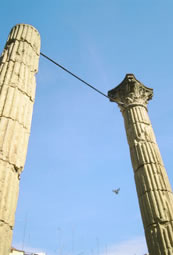
Neoclassical Heritage
Within the step of the 18th into the 19th century, Europe suffered a strong agitation: the Industrial Revolution, the French Revolution and the revolutionary movements of 1820, 1830 and 1848. Moreover, Catalonia bumped into a historical fact of first magnitude: the War of the French.Going in the time backwards, the 18th century presents a more positive panorama in the Principality in spite of the effects of the Succession’s war. The second half of the same century returned the taste for the antiquity and the interest for the ruins. The Neoclassicism condemned the immediate former art, that is, the Baroque and the Rococo. It assumes Grecoroman art and the Renaissance as models of balance, measure and lightness, and the excess of an art which is based on the imagination is condemned. The luxury and the exuberance of the Baroque are opposed the austerity and the severe soberness of an artistic aesthetic that loves the truth and the nature over all the rest. We can describe the Neoclassicism like an aesthetic movement of intellectual basis. Expression in images of the ideology of the upward bourgeoisie who criticizes the excesses and the virtuosity of the art immediately previous, and who wanted to involve thoroughly with the problems of the time.
The neoclassical architects know that a new social order requires a new order of the city, so all their projects are set in a plan of urbanistic reform. The new city will have to have, like the ancient one, its monuments, but the architect will have to be concerned also with the social and functional development. Churches are constructed in way of classical temples, but also schools, hospitals, markets, customs, ports, streetsand squares. Sculptors and painters work for the city: statues, ornaments and great historical representations that serve as example to the citizens. In the Costa Daurada we see this ideology in little chapels or churches of small villages of the demarcation: Calafell, Constante, Cunit, Falset, Gratallops, etc.
